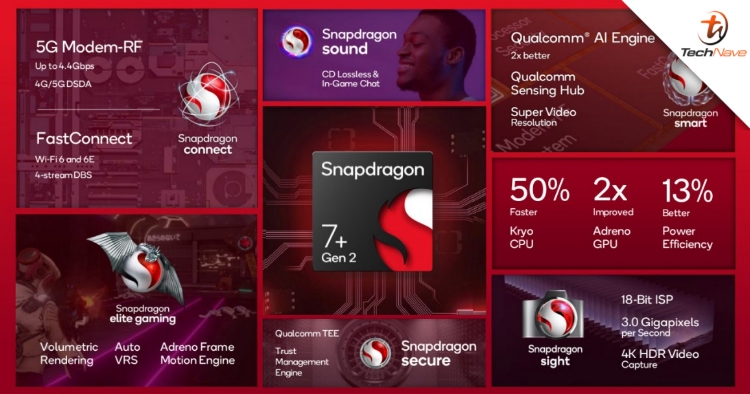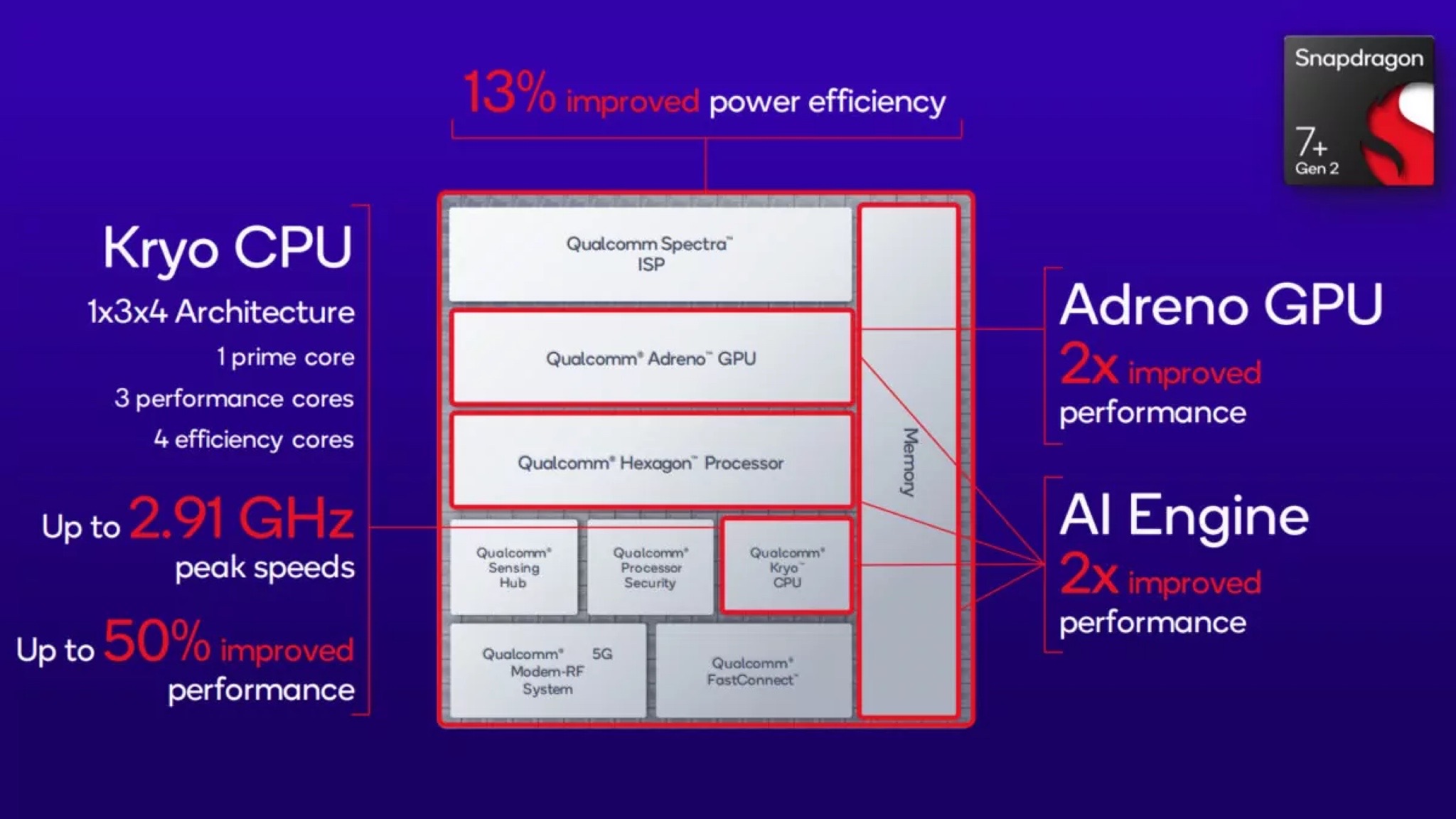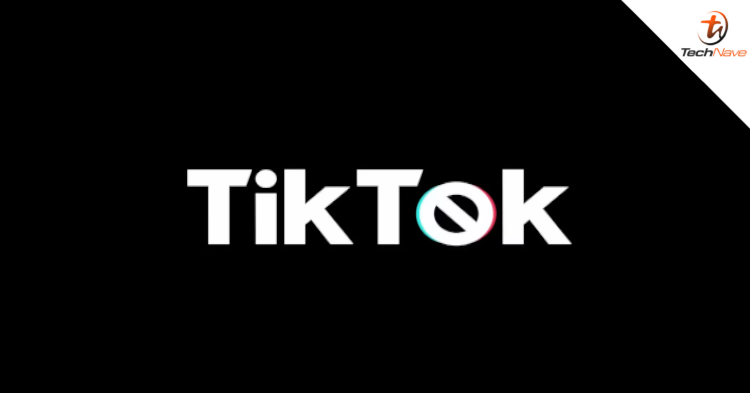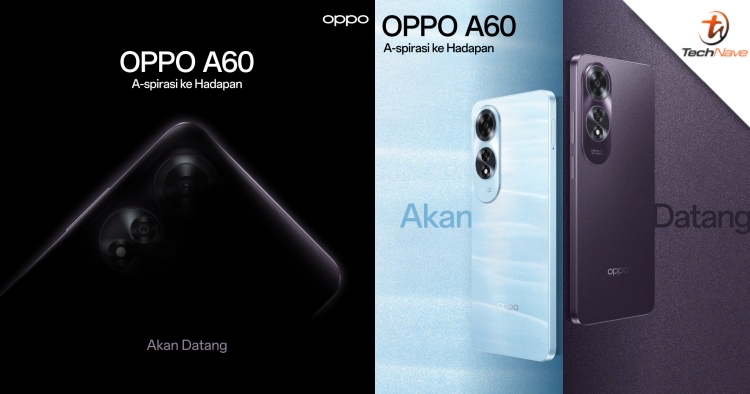
Previously, we reported that Qualcomm is set to release the successor to its upper mid-range mobile chipset, the Snapdragon 7 Gen 1. True to the rumours, the SoC did release today, but with a slightly different name than expected, as it is called the Snapdragon 7+ Gen 1.
Offering substantial performance and power efficiency improvements from the predecessor, the new chipset features a main Kryo CPU core clocked at 2.91GHz, while the 1+3+4 CPU setup delivers an over 50 per cent increase in performance. As reported by GSMArena, there’s also a new unnamed Adreno GPU which Qualcomm claims outputs twice the performance and a 13 per cent efficiency gain.

The Snapdragon 7+ Gen 2 also has an upgraded 18-bit triple ISP for improved low-light photography by stacking 30 images into one. Sticking to imaging, the SoC now supports 200MP sensors and HDR video capture with triple exposures from two cameras simultaneously.
Besides that, the chipset sports Auto Variable Rate Shading and Volumetric Rendering. The latter was first introduced in the Snapdragon 8 Gen 1 while the former renders foreground gaming scenes in high resolution and leave the background in low resolution to save energy and resources.
AI capabilities were also upgraded, with the SoC sporting twice the performance of Qualcomm’s AI Engine and 40 per cent battery savings per watt. Moreover, the chipset utilises the Snapdragon X62 5G Modem-RF System with up to 4.4 Gbps download. and utilises the 4G/5G dual-sim dual active (DSDA) feature.
The Snapdragon 7+ Gen 2 SoC is set to be powering mid-range devices as early as next month. As reported by Android Authority, Qualcomm said that it expects the chipset to be powering Android devices priced between USD400 to USD600 or ~RM1794 to ~RM2692.
So, what do you guys think of the Snapdragon 7+ Gen 2 SoC? Share your thoughts with us in the comments below and stay tuned to TechNave for more trending tech news.


















COMMENTS